Alcoa Aluminum (1960)
Apparently, in the 1960’s not only was it perfectly okay to run an ad that implied that women are weak, it was actually considered good marketing. This Alcoa Aluminum ad touted its ease of use, that even a woman (gasp!) can open up an aluminum cap.

Alcoa Aluminum 1960
McDonald’s (1965)
McDonald’s has been around for decades, but its advertising strategies has changed drastically from 1965. Not only that, the price of a meal has also changed dramatically. Back then, you could get a hamburger, fries, and a milk shake for just 52 cents. You could add a drink for between 10 to 15 cents too. Today, you’d be lucky to get even one item for a dollar, forget about 75 cents.

McDonald’s (1965)
Tipalet (1969)
This 1969 ad from Tipalet is a pretty flagrant example of just how prevalent sexism was in advertising back then, and it was especially commonplace in ads for cigarettes. From the suggestive tagline: “blow in her face and she’ll follow you anyway,” to the image, this ad would cause a total firestorm today.

Tipalet 1960s
Schlitz Beer (1960s)
In this ad for Schlitz Beer, we see that you actually had to use a can opener in order to open up a canned beer. Not only does this make us very grateful for tabs, but it’s interesting to see that the company was advertising that their can was the easiest to open — with a can opener! The ad was right, someday all beer cans will be this easy to open, in fact most of them are way easier to open than this one.

Schlitz Beer 1960s
Columbia Records (1970s)
This out is seriously outdated on so many levels. Let’s start with the fact that records and tapes have both been obsolete for a while now, with CDs and MP3 players even being outdated at this point. Can you imagine getting 13 physical records or tapes for just $1? This was a great deal coming from Columbia Records if you join their Record & Tape Club.

Columbia Records 1970s
Ohio Carriage Company (1900s)
This ad is pretty hilarious to us 200 years later. The main thing they are advertising is the fact that there are no child laborers. Reading this ad’s headline today reads more like satire, which is actually a really good sign. It’s good that we’ve at the very least abolished child labor in the United States, and hopefully this can become the norm everywhere in the world sooner than later.

Ohio Carriage Company 1900s
7up (1960s)
Way back before we knew the truth about just how unhealthy soda is for us, beverage companies were able to tell us that drinking soda before partaking in physical activities is actually akin to having an energy drink. Not that energy drinks are any better for you, but we digress. Another bizarre feature of this ad is the fact that the girl is standing in such a strange way.

7 Up 1960s
Marilyn Monroe Firework Safety Ad (1950s)
Perhaps in the 1950’s the thought process that the only way men would listen to any sort of firework safety ad would be by including a pretty lady in it, and back then, who else would you choose for this role but Marilyn Monroe? We hope that at least the ad worked and people were careful with fireworks during Independence Day.

Marilyn Monroe Firework Safety 1950s
General Electric (1980s)
As time goes on, technological advances will only continue. This GE ad told the public about something that was groundbreaking at the time: a clock radio that’s also an alarm clock, featuring a brand new feature, the “snooze” button. Nowadays, most of us don’t have a clock or a radio, but a smartphone that’s both and much, much more.

General Electric 1980s
Best Buy (1999)
Anyone who was around in the 1990’s knows that the Year 2000 problem, or Y2k, was a massive phenomenon. It all started with the fear that computer errors resulting from format changes after the new millennium would cause global damage, leading to a huge panic. In reality, nothing happened when 1999 turned in 2000, but as we see in this Best Buy ad, there were still plenty of warnings that have now become time capsule artifacts.

Best Buy 1999
Modern Hair Styling (1950s)
While this might be reminiscent of North Korea today, this modern hair styling guide was quite commonplace during the 1950s. We see the popular and trending hairstyles from back then, but now there are countless hairstyle possibilities for both men and women. Some of these have actually come back into fashion as well, and many of these are acceptable hairstyles for women as well.

Modern Hair Styling 1950s
Budweiser (1950s)
This Budweiser ad is a strange one, considering that the story that it tells (it’s already weird that the ad has a short story written in it) is of the wife remembering her husband’s poker night with the guys, while he had completely forgotten. For some reason, the wife gives Budweiser the credit for “reminding” her to get the beer to go alongside the snacks, which she also thought of and prepared ahead of time.

Budweiser 1950s
Hormel (1970s)
In this ad, Hormel is marketing a solution to the rising prices of meat by selling their beef stew in a can. Here is another example of an ad including a large quantity of text to read, which was pretty common before TV ads became all the rage. To be honest, we wouldn’t really want to eat this beef stew from a can unless we were really desperate.

Hormel 1970s
Leggs (1970s)
This ad is perhaps the most egregious when it comes to sexism in advertisements from back then, considering it is literally showing a man standing on top of a rug “made out of” a woman, while its tagline reads “it’s nice to have a girl around the house.” What any of this has to do with selling a pair of pants is beyond us, and we’re glad we’ve moved far away from this kind of advertising.

Leggs 1970s
Nichols Industries Inc (1950s)
Considering the amount of mass shootings the United States experiences each year, this realistic looking toy gun is not exactly something toy manufacturers would be so eager to advertise to children these days. Unfortunately, this is one example that shows how society has changed but not for the better.
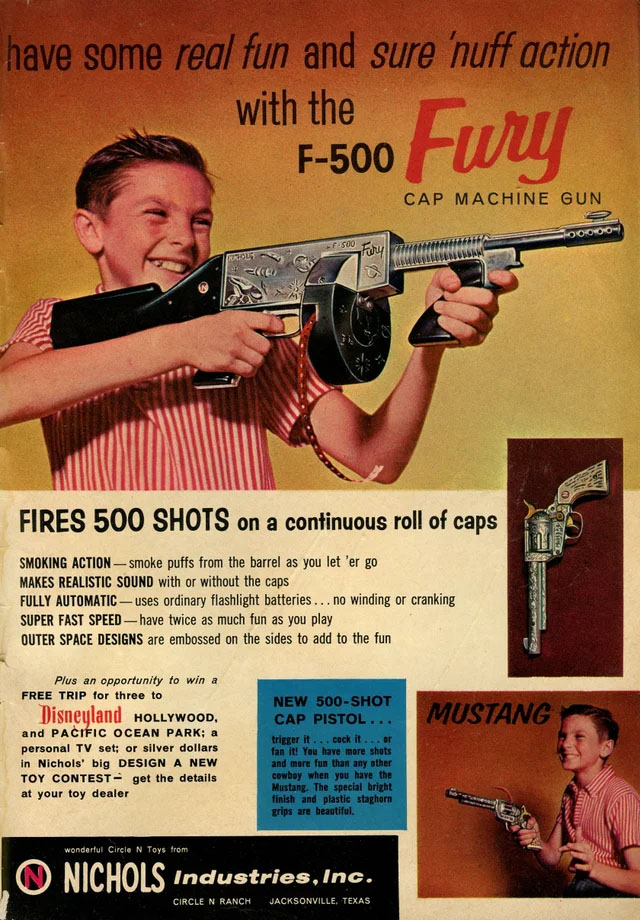
Nichols Industries Inc 1950s
Kohler Bathroom Fixtures (1960s)
These Kohler bathroom fixtures were proudly advertised in this ad as “the bold look,” of avocado, which we would agree is definitely a bold choice, but that’s not exactly a positive. This bathroom screams “outdated,” and we would advise everyone from making this kind of design choice again. The best bet for your home to remain in style is to go with classic, neutral colors.

Kohler Bathroom Fixtures 1960s
Airflow Company (1980s)
This ad for an air conditioning company is funny, but would likely not go over well today. With plenty of cases of inappropriate workplace behaviors, we wouldn’t really want to encourage anyone wearing revealing bathing suits like this. Even in an advertisement, we don’t think people would have much patience for this kind of things today.

Airflow Company 1980s
Sears (1910s)
Did you know that about 100 years ago, you could actually buy a house at Sears? Back then, you could score yourself a 12-bedroom house for $6000. Even with inflation, that’s about $172,779 which is still a pretty amazing deal for a 12 bed room house. You’d be hard pressed to find a much smaller home in decent condition for that price.

Sears 1910s
Cigar Institute Of America (1960s)
It was pretty commonplace to compare the modern man to a caveman back in the 1960’s, and it certainly has not aged well. Their tactic was convincing men that if they smoke these cigars, they’ll be more macho men, with a subservient woman as an accessory to boot.

Cigar Institute Of America 1960s
Sears Pikes Peak Hill Climb by Lionel (1960s)
This lovely illustrated ad it for Sears’ Pike’s Peak Hill Climb race track toy create by Lionel. You can really feel just how much the kids are in awe of this toy set, and to be honest it does really look very impressive. This is a rare example of an ad that’s actually really nice from this time period.

Sears Pikes Peak Hill 1960s
Lucky Tiger Hair Tonic (1950s)
This horrible ad was released by Lucky Tiger Hair Tonic during the 1950’s, and it promised that any man using their product would be the one that “gets the gals.” The worst part of the ad is the inclusion of women’s heads as hunting prizes and the tiger being personified as the hunter. It’s just all around very bad.

Lucky Tiger Hair Tonic 1950s
Tart-Chestnut Co (1930s)
Back in the 1930’s, the name of this Tart Chestnut Company product was not controversial, so it shows just how much can change over the course of a century. The name “Big Tits” is in reference to the Titus Tart chip company’s nickname.

Tart Chestnut Co 1930s
Sony (1960s)
Before we were able to fit a video camera into our pockets easily by way of our phones, the only way to record anything on video was with this clunky hardware. This guy somehow managed to climb up onto a tree with all of his equipment in order to film these baby birds. Now it looks like more of a nuisance than a convenience.
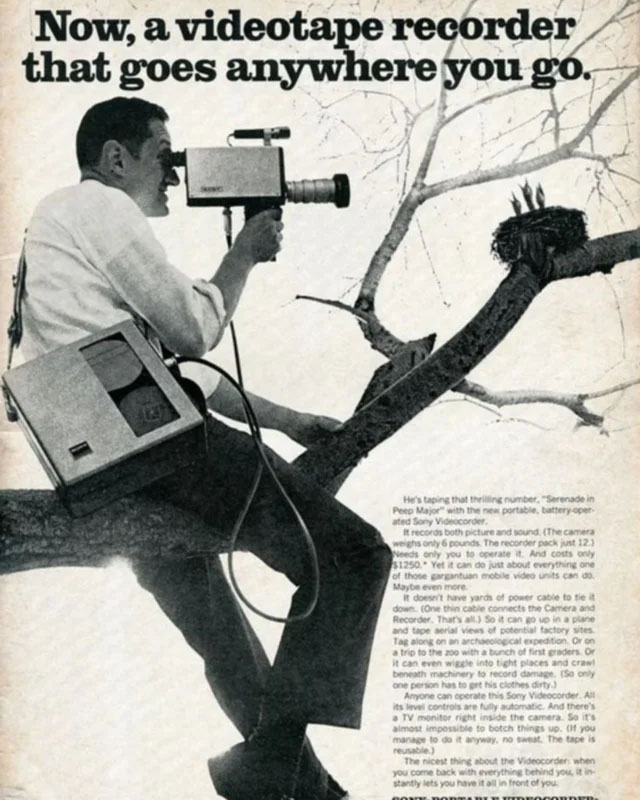
Sony 1960s
Kelloggs (1930s)
You might not know this but in the 1930’s, Kelloggs tried to sell vitamins, and they thought the best way to market this product is by telling men that these vitamins will keep their wives full of energy even after all of the housework and cooking they have to do, and on top of that, as an added bonus, she’ll look even cuter the harder she’s working.

Kelloggs (1930s)
Toothache Drops (1885)
If you can believe it, in 1885, cocaine was not just perfectly legal, it was recommended and marketed as a toothache aid in the form of drops that cost just 15 cents. There are even kids featured in the advertisement for these cocaine drops. Now we know that it’s not the best idea after all.

Toothache Drops 1885
Camel (1940s)
Back in the 1940’s, not only were cigarette ads super common, but they were actually able to make claims like “more doctors smoke Camels than any other cigarette,” which would absolutely not be the right move today. In fact, any doctor that promotes smoking today would certainly be removed from their position.

Camel 1940s
Sony (1980s)
This ad is a perfect summary of what the best of the 1980’s had to offer. When the Walkman was introduced, everything changed, and it paved the way to the way we listen to music on the go now. Complete with the neon colored clothing, roller skates, and big hair, nothing could say 80’s more than this Sony advertisement.

Sony 1980s
Bell and Howell Projector (1950s)
Once again, we have an advertisement from the 1950’s that showcases the concept of selling a product through the exposure of women’s bodies. This ad’s copy is tongue-in-cheek, saying that “Sabrina demonstrates the world’s finest projection equipment,” with her chest prominently displayed, though they are advertising a slide projector.

Bell And Howell Projector 1950s
Plymouth (1940s)
Of course, one of the main differences between ads from the 1940’s and the ads we’re used to today is the massive amount of text that was once included in advertisements. Nowadays, people could not be bothered to read two lines of text, forget about an entire page worth of it.
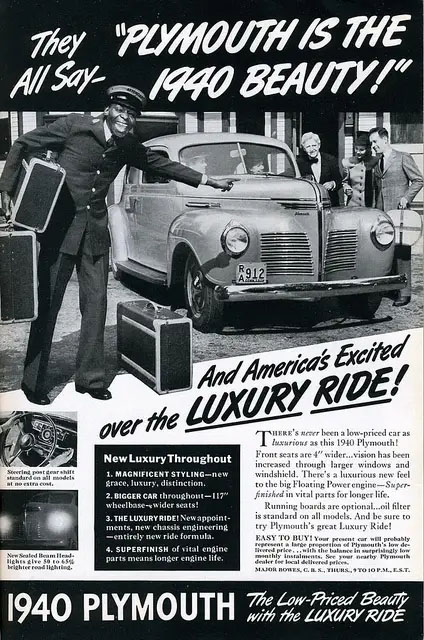
Plymouth 1940s
Out Of The Closet Inc (1970s)
Although this “Gay Bob” doll was probably released with the best intentions of attempting to normalize LGBTQ+, it does come off as a bit offensive, or in today’s lexicon, problematic. It was marketed as “the world’s first gay doll for everyone,” which prompts us to ask, what does that even mean?

Out Of The Closet Inc 1970s
Radio Shack (1970s)
Radio Shack used to be at the top of its game when it came to home electronics, but those days are long gone. Giant stores like Best Buy and Walmart have completely obliterated Radio Shack, which has gone through bankruptcy several times in attempts to save its floundering brand as of late.
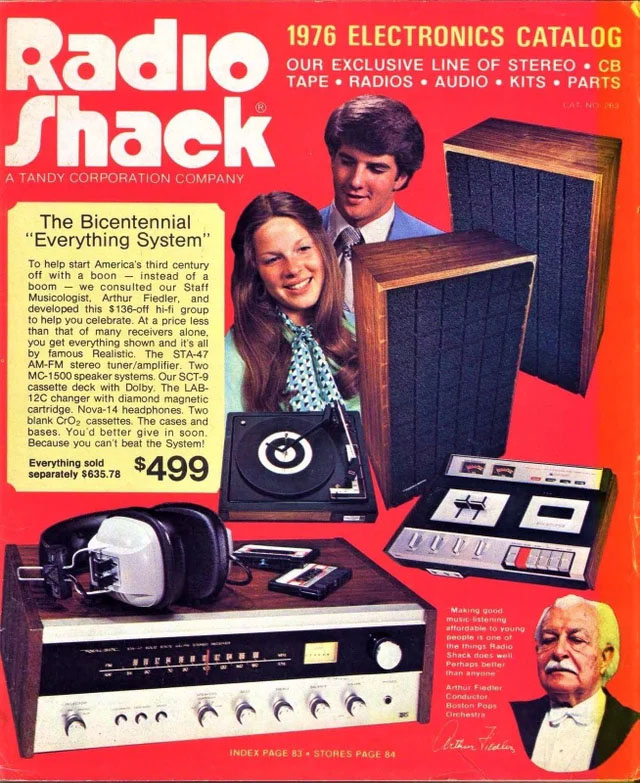
Radio Shack 1970s
McDonalds (1970s)
This was most likely another attempt at being more inclusive, and it was likely okay to post as an ad like this in the 1970’s. McDonald’s tried to use language in a way to appeal to African American customers, but looking at it today feels like they’re relying on harmful stereotypes rather than being inclusive.
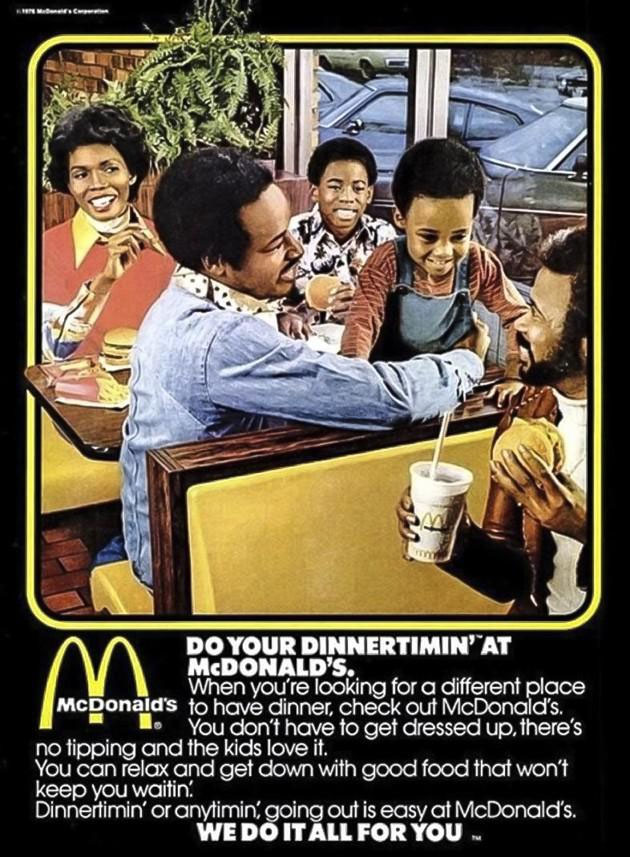
McDonalds (1970s)
Larsen Company (1949)
There’s nothing offensive on a personal level in this advertisement, but we’re willing to bet that nobody today would be enticed by an ad for “5 separate vegetables in 1 can.” We’re not sure if and how this advertisement was actually effective back then, but it would certainly never work now.

Larsen Company 1949
Schlitz Beer (1950s)
We have yet another Schlitz Beer advertisement from the 1950’s that relies on sexist stereotypes. Here, a young wife is distraught because she has burnt the dinner she prepared for her husband, who in the meantime is trying to comfort her by saying that “at least she didn’t burn the beer.”

Schlitz Beer 1950s
Western Electric (1950s)
This ad from Western Electric gives us a glimpse into what people thought the future of telephones would be. While they did get a few things right in that a number pad became the norm, they didn’t think far ahead enough to even dream of a cordless phone being a possibility. Imagine if we told them about smartphones.

Western Electric 1950s
Martini & Rossi (1960s)
This ad is certainly one of the most egregious examples of sexism we’ve seen even for ads from back then. Martini & Rossi thought it would be a good idea to show a woman literally trapped in a cage as the man in the ad looks on laughing.

Martini & Rossi (1960s)
Honda (1970s)
If you don’t look closely at this ad, you might think it’s horribly sexist, but upon further inspection, you’ll actually noticed that Honda is actually mocking people who think that “women don’t understand rack and pinion steering.” They’re actually appealing to the whole population instead of limiting their product marketing to just half of the available potential buyers.

Honda 1970s
7up (1950s)
This is definitely another ad that would not be approved today. You would never see a soda company using a baby drinking their product in an advertisement today. People would certainly be up in arms about it.

7 Up 1950s
Texaco (1943)
This ad from Texaco has a very interesting concept, since it was released during the war in an effort to boost morale and show that one day, children will ask their parents who exactly was Hitler. Interestingly enough, we currently live in a world where many people have never heard of Hitler, but it’s actually not a good thing at all.
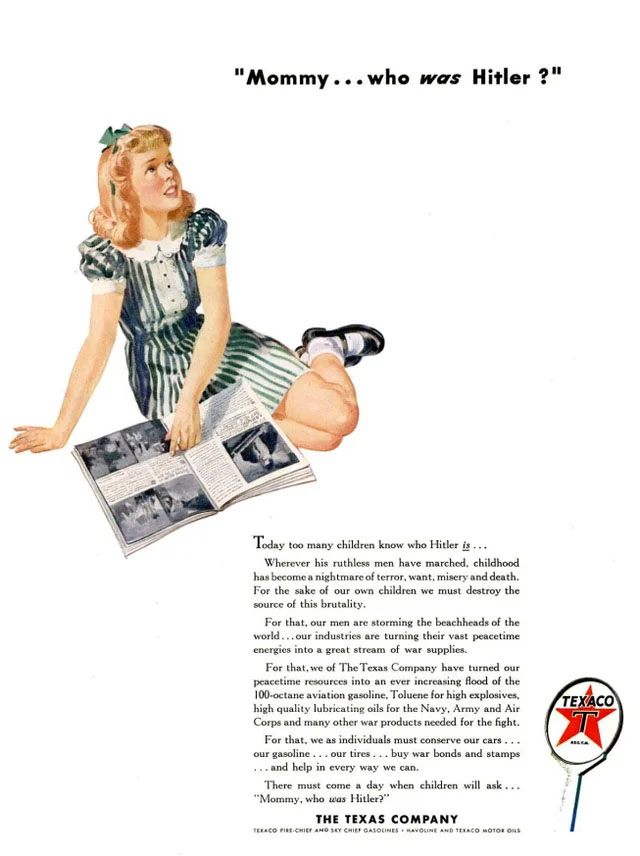
Texaco 1943
Van Heusen (1950s)
In this ad from the 1950’s, Van Heusen is relying on classist stereotypes in order to try to make their products look more appealing and upper class, implying that wearing their shirts will immediately elevate you above anyone wearing traditional tribal attire.

Van Heusen 1950s


